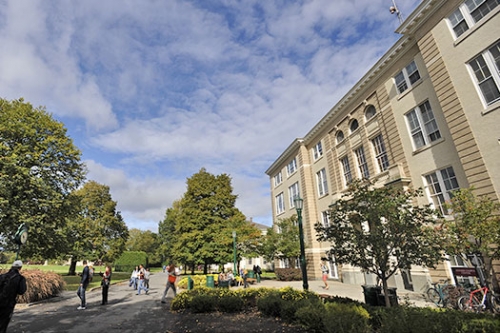There are seven Minerva Houses: Wold and Messa are housed in North College; Sorum and Harris in South College. Beuth House is located next to Memorial Chapel; Golub is across from Octopus’ Garden; Breazzano is just within Union’s main gate to the right.
All incoming first year students and faculty are assigned to a Minerva House, and staff at their request. Incoming first year students are placed in a First Year Preceptorial class, which will have an influence on the Minerva House they will be assigned to. In turn, this will determine the residence hall where they will live. The intent is to ‘block’ members of the same Minerva House near one another in their residence hall.
Each House is governed by a House Council. Each House has a student and faculty representative to the Minerva Council, the body which oversees the overall direction and the policies which, in general, govern the Houses. However, each House is encouraged to develop its own unique character and spirit. Each House Council will be led by a set of House Council co-chairs. Other important positions include finance chair, communications chair, and House Coordinator. Many Houses have 'members at large' and have created unique positions as they develop the best governance structure for their particular House.
Houses are given a generous annual budget with which the Council makes decisions on how best to spend the funds they are allocated to meet the Minerva Program priorities:
- Develop a sense of identity and belonging to one’s house.
- Foster connections between people, places and ideas. Especially important is connecting people who would not ordinarily interact and connecting students with faculty.
- Create comfortable, inclusive, and welcoming spaces and communities.
- Blur the line between intellectual life and social life outside of the classroom.
- Provide students opportunities for hands-on, experiential, and/or interdisciplinary engagement outside the classroom.
- Expand students’ repertoire of meaningful, practical, and essential life and leadership skills.
All members of the House, whether they live there or not, have round the clock access to their Minerva. Students can use the kitchen, hang out in common rooms, study, read, watch movies, gather to watch major sporting events, even nap in their Minerva House. All Houses have barbecues for grilling and space for sitting outside when the weather is good. The “Life of the House” is what the members want it to be.
